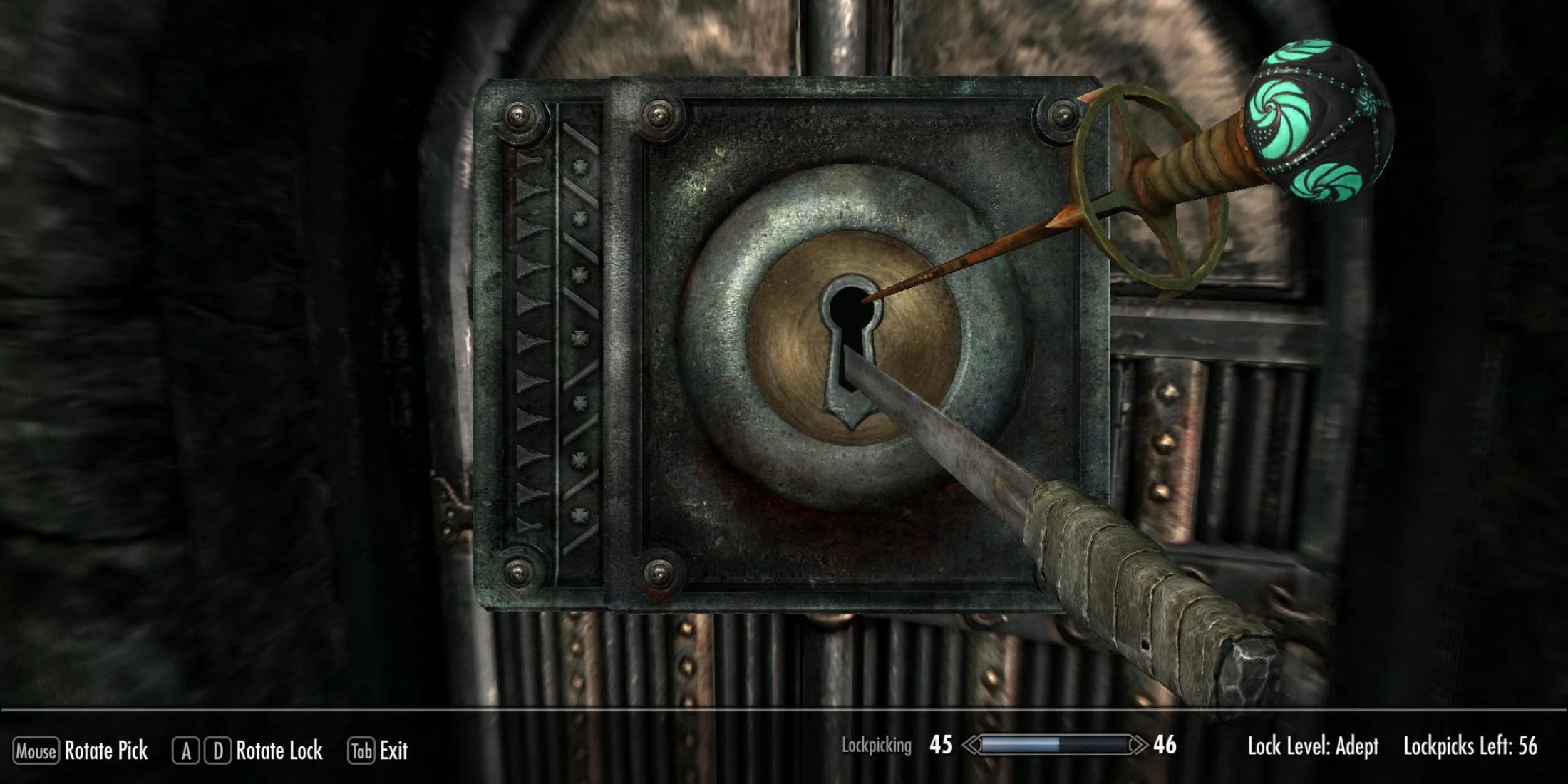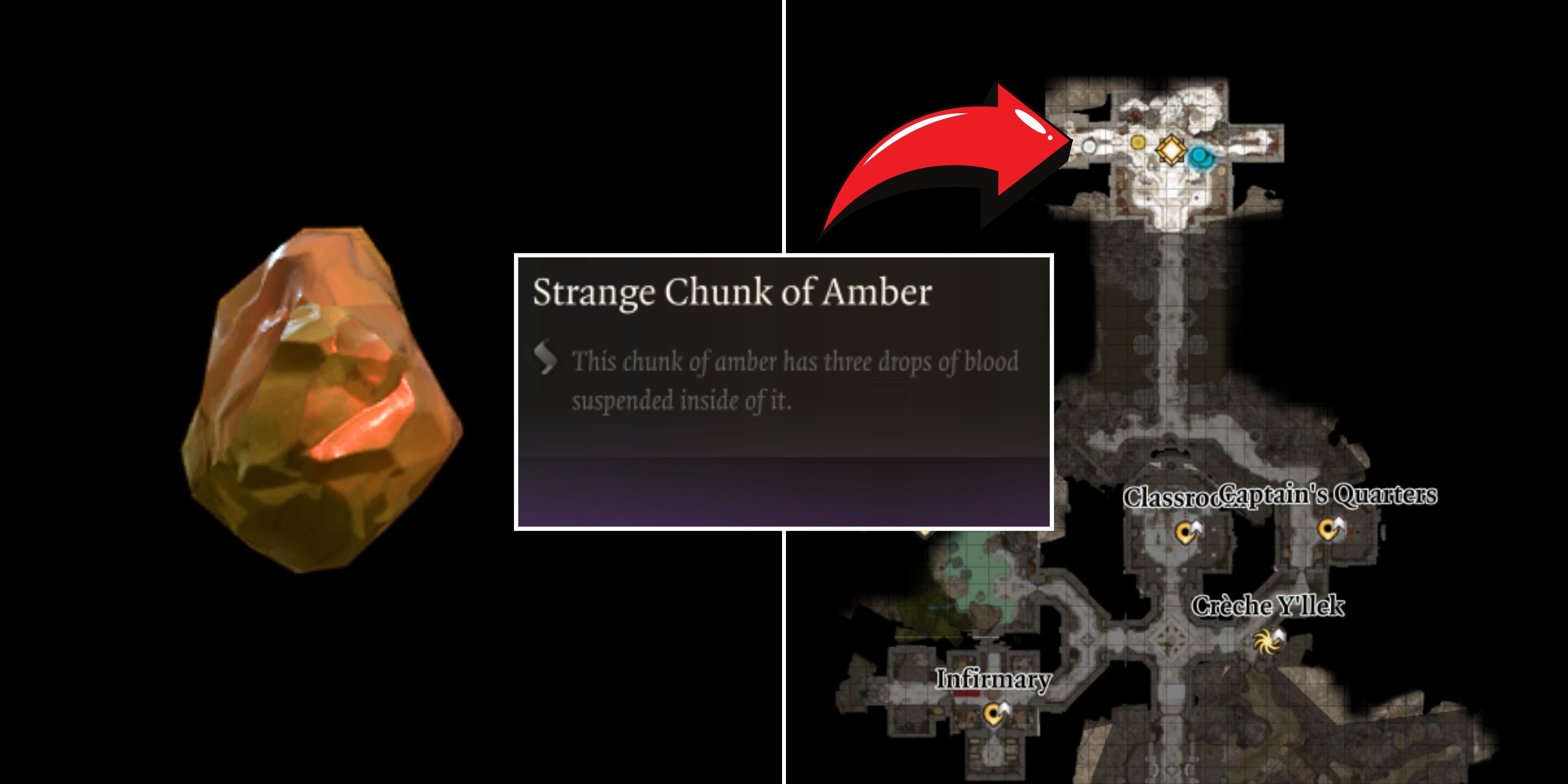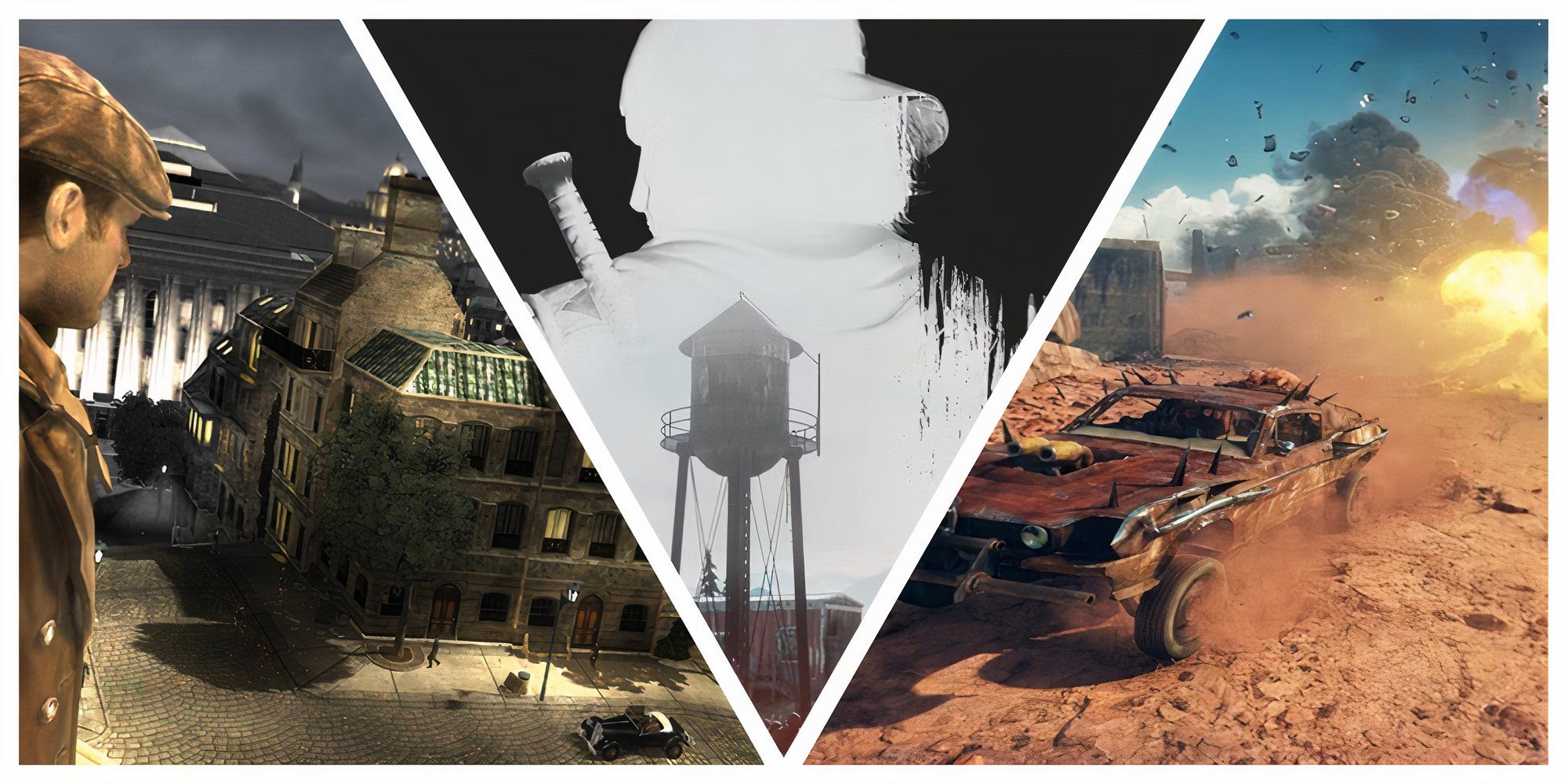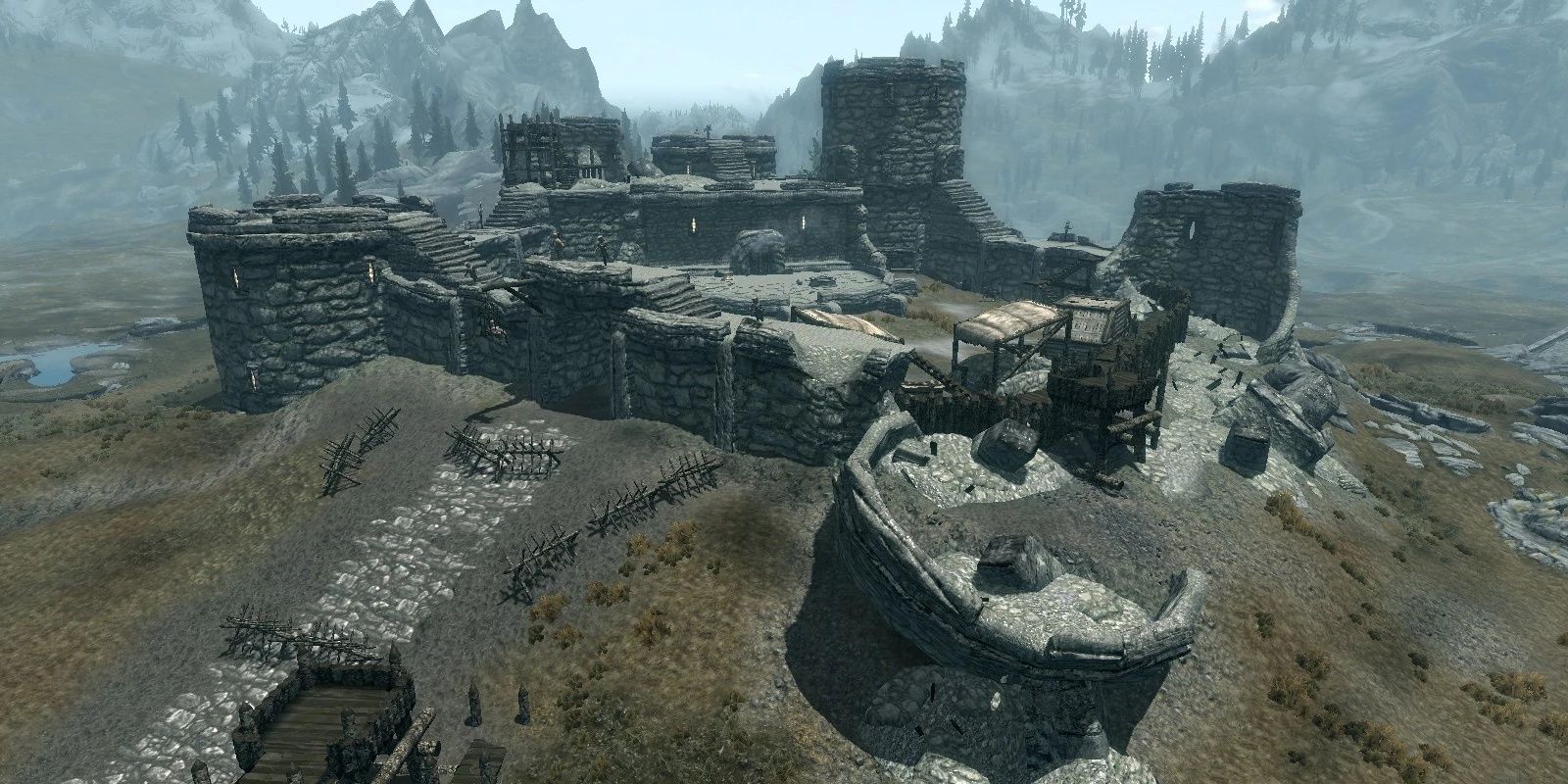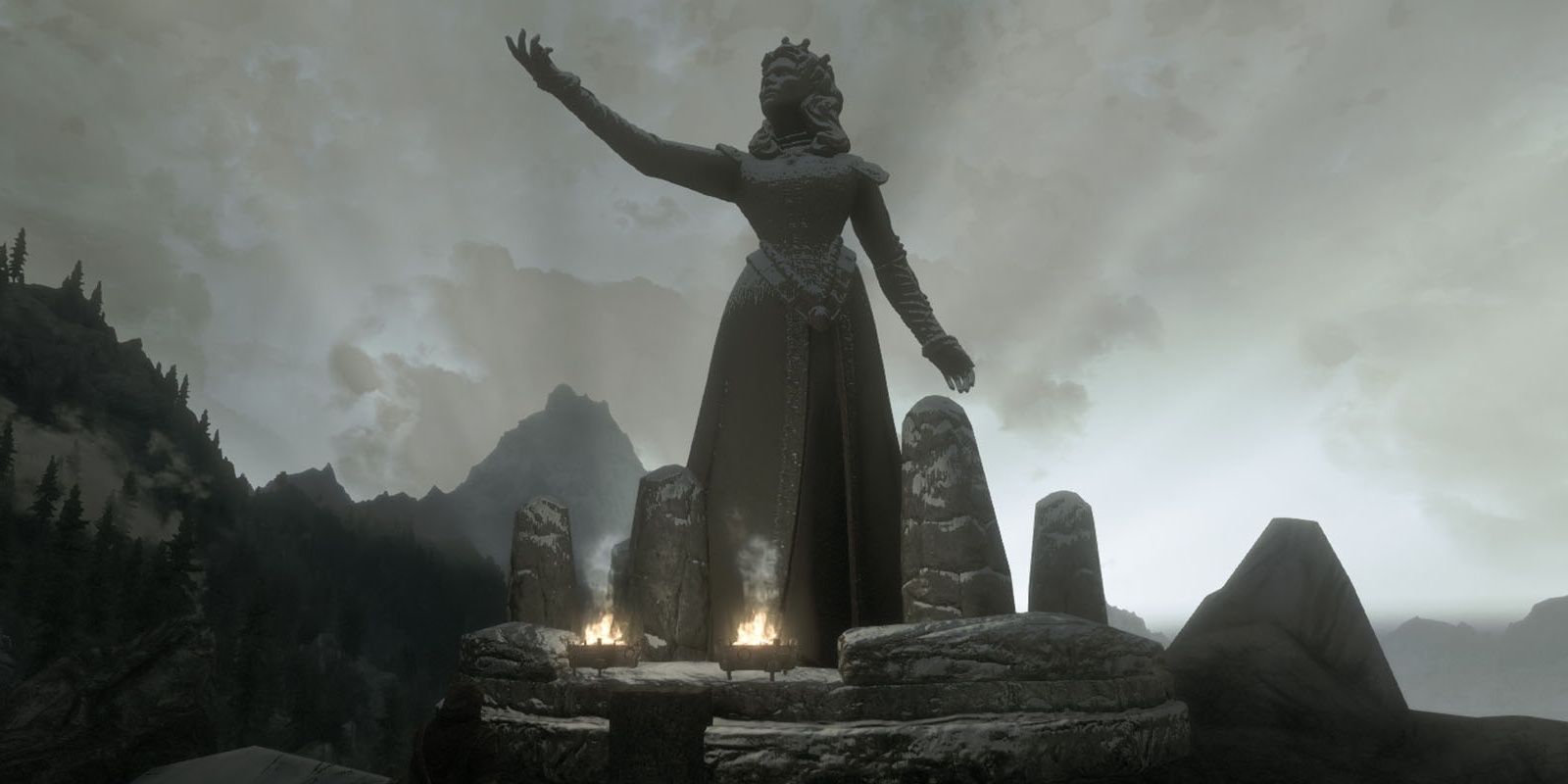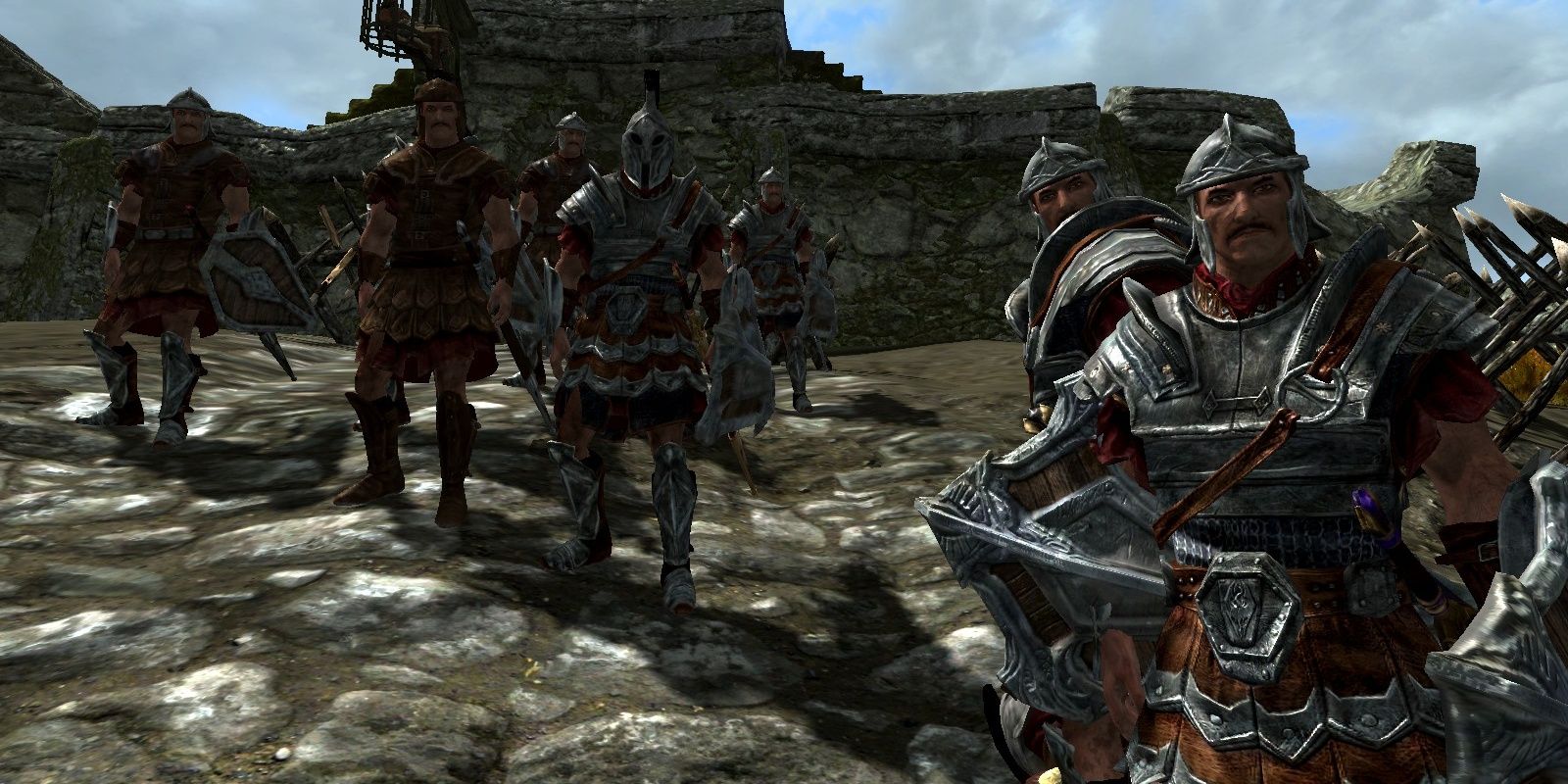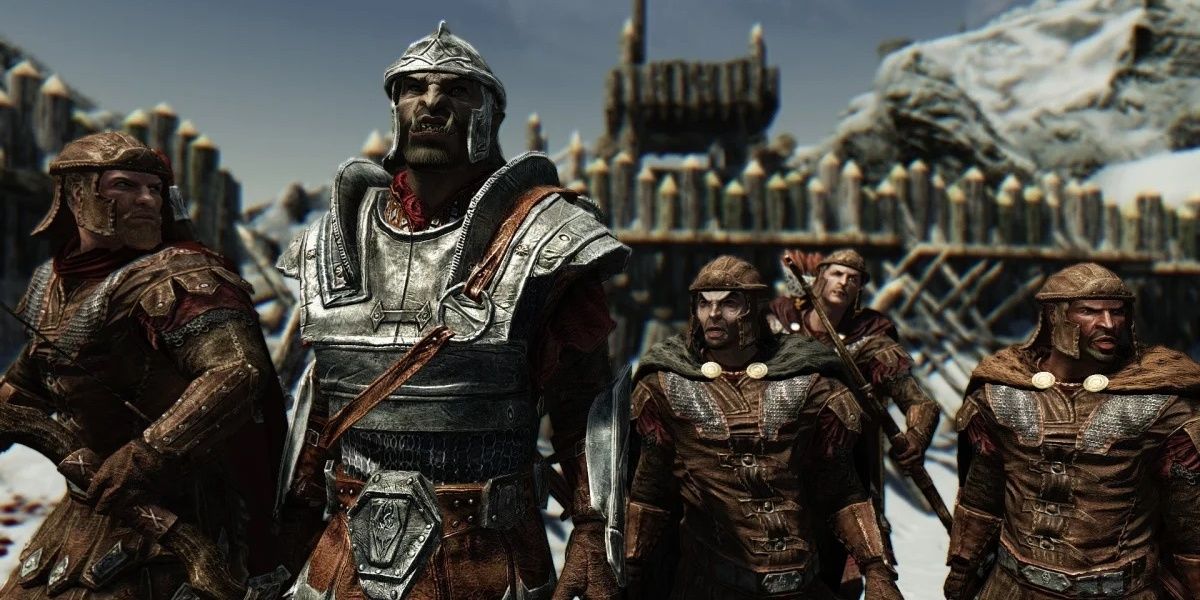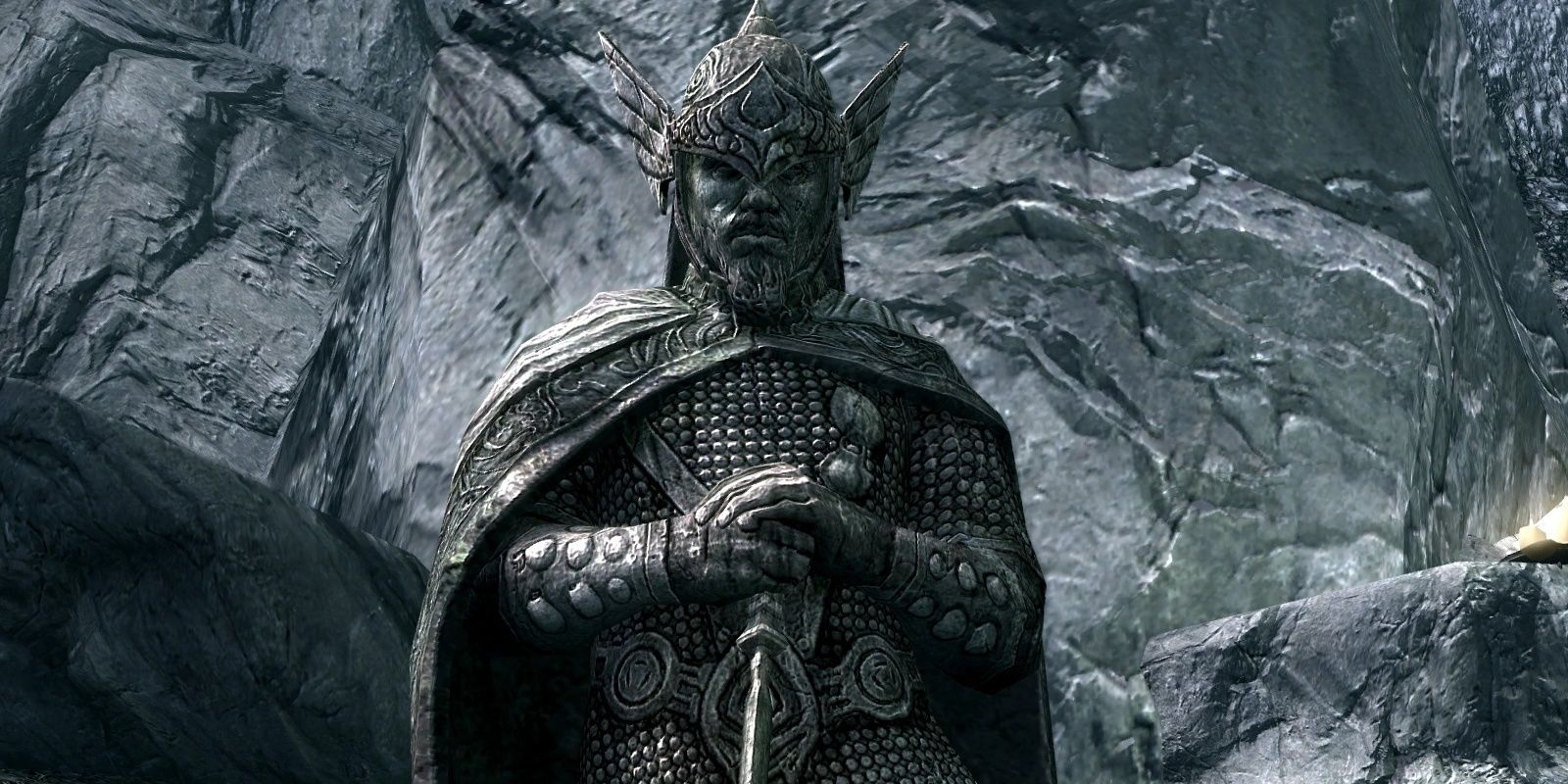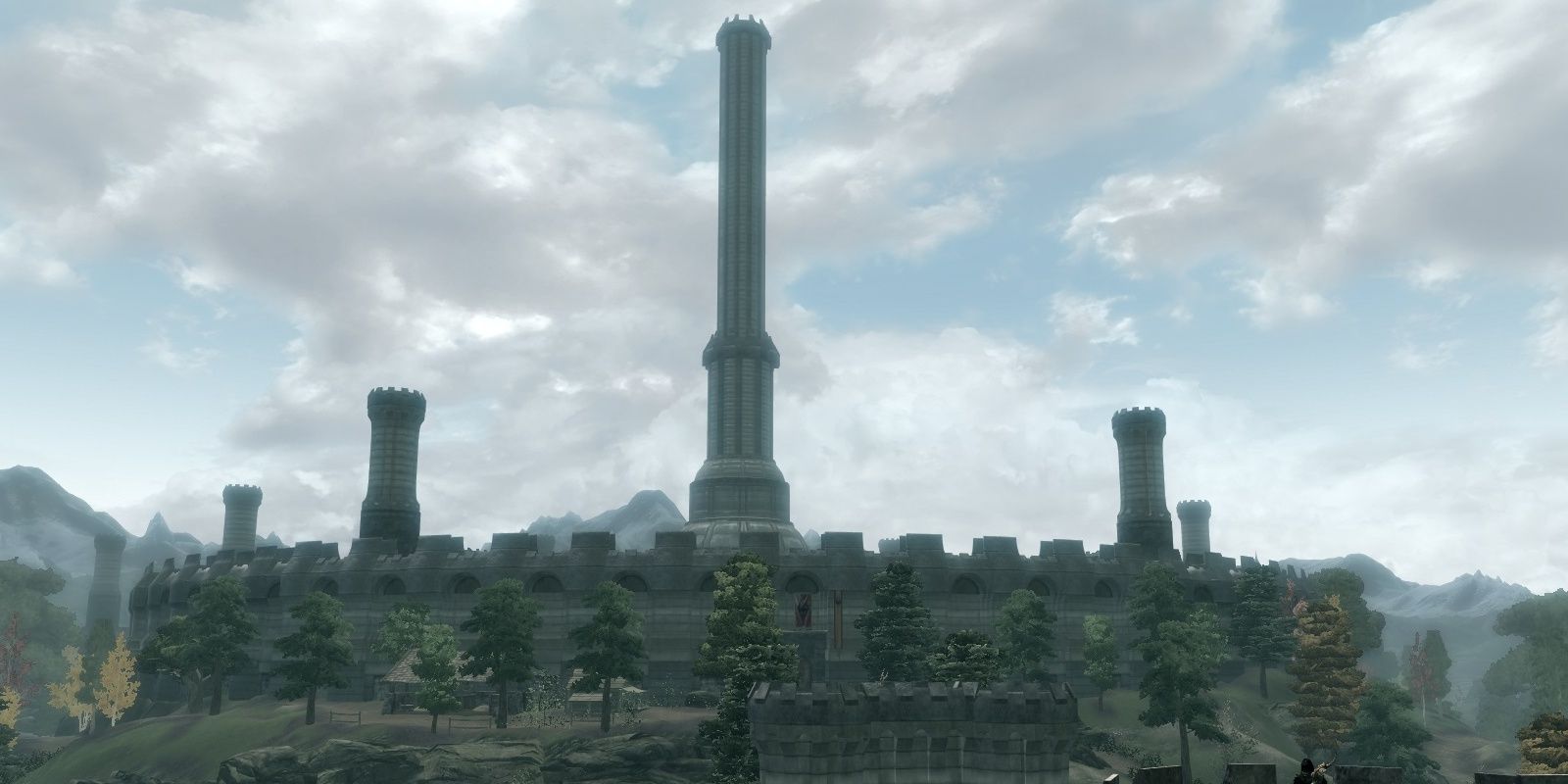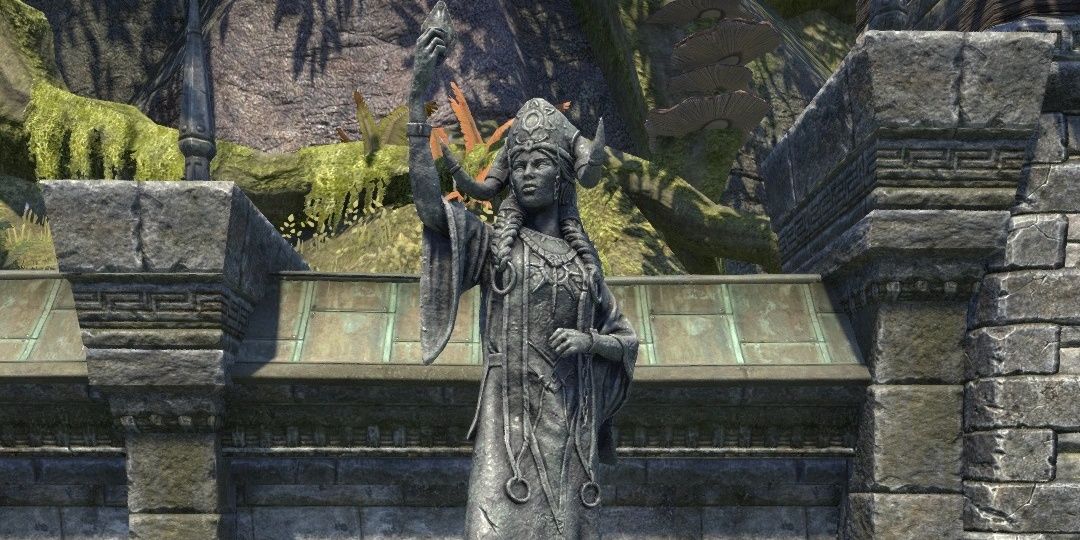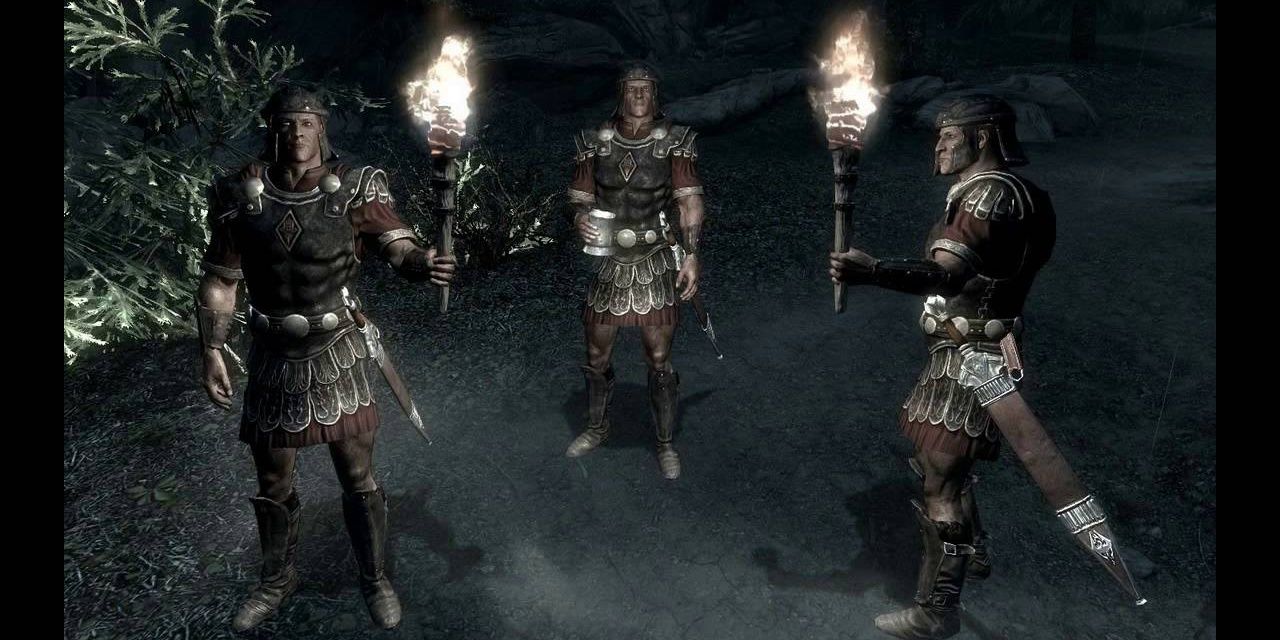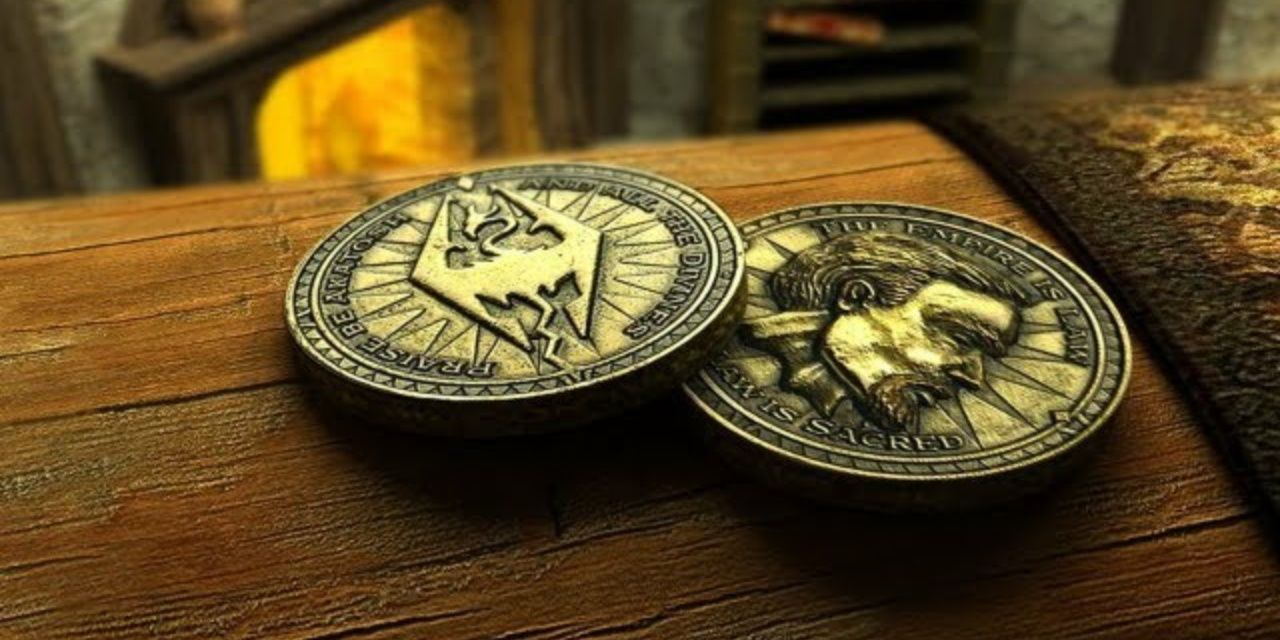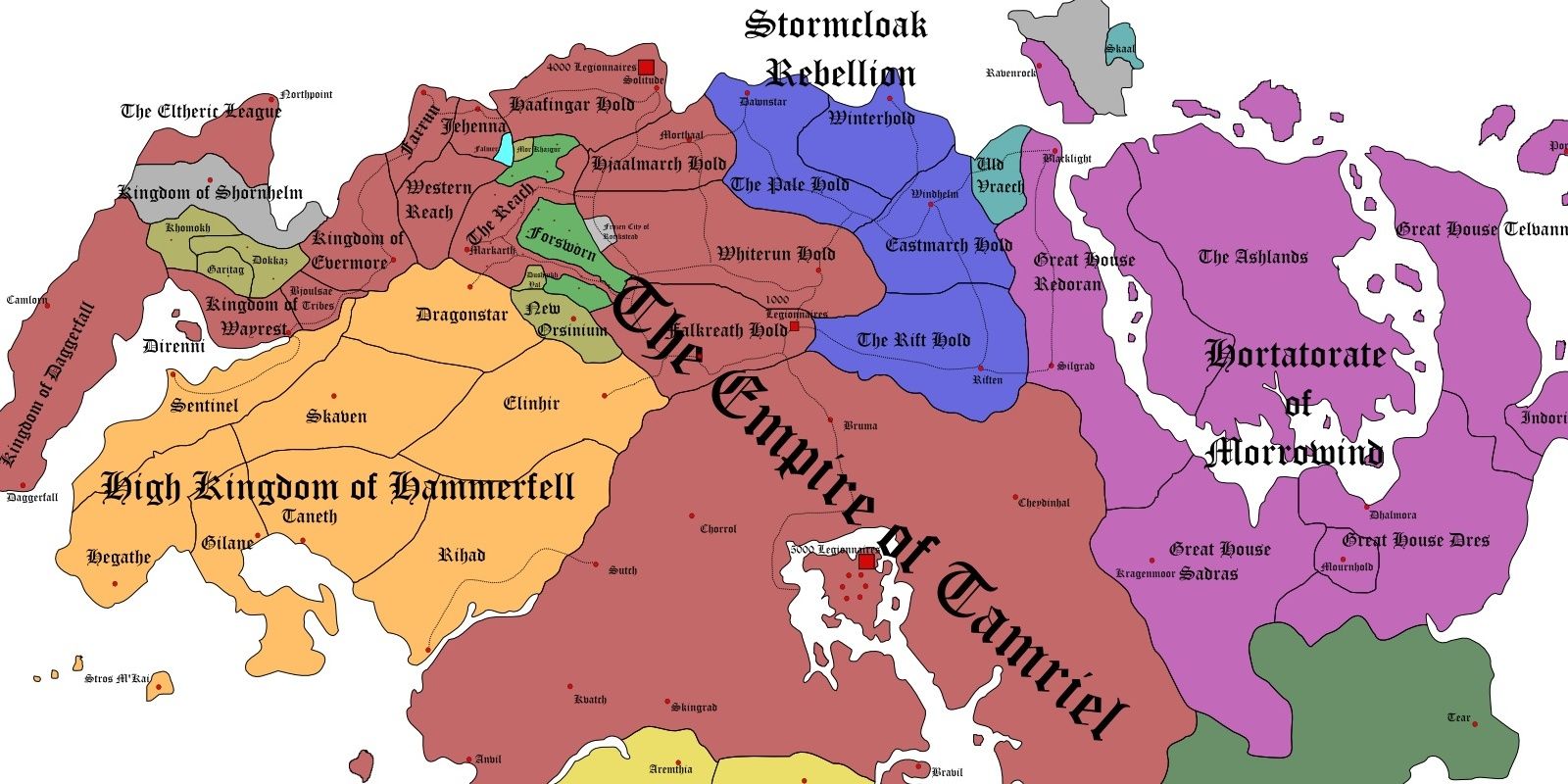The Empire of Tamriel is an ever-present force in every main entry of the series. They possess a robust political system that serves to maintain their grip on the provinces. Backed up by the impressive might of the Imperial Legions the Empire has managed to endure for generations.
Ancient history buffs will no doubt notice the analogies to Rome. Aesthetically, the empires share similarities that are unmistakable. However, the comparisons go even deeper upon further examination: socially, politically, militarily, and religiously. Although not an exhaustive list, these are some of the more prominent entries that should stand out to gamers and historians alike.
10 The Forts
Forts are a common site when exploring The Elder Scrolls games. Whether currently inhabited or abandoned, many were built by the Imperial military. Since it's a medieval fantasy setting forts provide a valuable source of defense. They also serve to communicate the Empire's strength and advertise their presence to the populace.
In the Republican period, Roman legionaries constructed fortified camps whenever they were not on the march. As Rome's borders stabilized many of these temporary fortifications became permanent. Like the Tamrielic Empire in the Fourth Era the late Roman Empire used forts to stabilize their gains. The priority had slowly shifted from offense to defense.
9 Multiple Gods
A polytheistic structure of religion exists in The Elder Scrolls. For the Imperials there are nine gods that compose their pantheon. Each one is a patron to some aspect of mortal life, such as commerce or fertility. Many also consider Tiber Septim, or Talos, as the chief deity of the group.
The Romans possessed many gods and far more than nine. Nevertheless, like in Tamriel, the Roman gods each governed a unique sphere of mortal life. Tiber Septim is analogous to Romulus, the founder of Rome, who was once human before ascending to godhood. A similar story is attributed to Tiber Septim according to the lore.
8 The Legions
The source of the Cyrodiilic Empire's power is undoubtedly her military. The legions are composed of highly-trained, professional soldiers. Their armor, swords, and shields in The Elder Scrolls V: Skyrim are very reminiscent of the Roman legionaries of the 1st and 2nd centuries A.D. The rank structure of the Tamrielic legions utilize a combination of Roman civilian and military ranks, such as quaestor and legate.
The comparisons don't end there. Both the Roman and Cyrodiilic legions were numbered in order to distinguish them across a far-flung empire. The focus on brutally harsh discipline is evident in both examples. It's also interesting to note that in both cases, a legion was subdivided into cohorts, a small tactical unit that served the Romans greatly in battle.
7 The Use of Provincials & Auxiliaries
The Empire isn't composed of Imperials exclusively. Other races under the Empire's control swell the ranks of the legions. Orcs, Nords, Dark Elves and more are either conscripted or volunteer to serve in the military. The racial composition of the Imperial army is thus quite diverse. Imperials themselves, however, tend to occupy the important leadership roles.
Rome's legions were ethnically diverse as well. Not every soldier was a Roman. Rather, they were often other Italic peoples living on the peninsula. Sometimes they were colonists living in Roman provinces. Barbarian allies who had a treaty with Rome also would supply troops. Although they couldn't occupy every position, blue-blooded Romans almost always provided the leadership, no matter the circumstances.
6 Divine Rulership
The zenith of the Empire's power occurred under the Septim dynasty. The founder, Tiber Septim, would eventually be revered as the Ninth Divine. His ancestors therefore have claimed a divine right to rule in Tamriel. The fact that the blood of a god runs through their veins grants the Septims a legitimacy that is hard to emulate or replace.
One aspect that differentiated the late Roman Empire from its earlier incarnation was the status of the emperor. No longer a mere "first among equals" as established by Augustus, the later emperors were treated as god-kings. Even to look upon the personage of the emperor was considered a great honor. Their divine right to rulership mirrors that of the Septims.
5 The Culture
Each culture in Tamriel has their own distinct characteristics. Imperials are described as great merchants and traders due to their shrewd business sense. Their physical complexion, along with their Latin names, underscores a connection with the Italian culture and the Romans in particular.
In addition to their reputation as warriors the Romans were known to be avid traders as well. Once their control over the Mediterranean was solidified, Roman trade flourished for centuries. Longtime fans of the series should recognize names like Tullius, Gratian, and Cicero as familiar names from Roman history.
4 Humble Origins
Every powerful empire has an origin which helps explain how it came to be. The Empire in The Elder Scrolls is no different. The ancient Imperials were once slaves and only gained their independence by revolting against their Elven masters. The First Empire was born shortly afterwards and continued to grow throughout the subsequent eras.
Rome wasn't built in a day, either. It began as a single village amongst many others. Gradually, they grew in strength until they were able to eclipse their Etruscan neighbors in terms of power. Once secure on the Italian mainland the Romans looked outward for further expansion. The Imperials would do the same.
3 The Emperor's Bodyguard
After the dissolution of the Blades the Mede dynasty instituted the Penitus Oculatus as their replacement. They serve as the emperor's bodyguard as well as his eyes and ears. It is their fundamental duty to protect the emperor's life at all cost.
The famous Praetorian Guard of Ancient Rome fulfilled a similar role. Their duty was to protect the emperor, although history shows that wasn't always the case. The Praetorians were responsible for the death of Caligula in 41 A.D. as a result of the latter's tyrannical rule. It was also not uncommon for the Praetorian Guard to act as spies, similar to the Penitus Oculatus.
2 The Dynasties
The Cyrodiilic Empire has experienced four separate incarnations. Families that have ruled throughout the eras included the Alessians, Remans, Septims, and Medes. All have left their mark on the Empire's history. Each dynasty was defined by its own unique challenges and triumphs. Interestingly, the Dragonborn plays a direct role in the potential fall of the Mede dynasty in Skyrim.
An empire that lasted as long as Rome's inevitably saw multiple dynasties occupy the throne. The Julio-Claudians, Flavians, Antonines, and Severans are a few of the families that ruled the empire in the early imperial period. Interspersed throughout these reigns were episodes of rebellion, revolt, and invasion.
1 A Huge Empire
At one time, the might of Tamriel's empire was nearly absolute. The greatest territorial extent of the Septim dynasty covered all nine provinces of Tamriel at one point. Imperial governors oversaw the maintenance of these territories and ensured the emperor's will was being carried out.
The size of Rome's empire was also quite impressive, reaching its greatest extent under the reign of Emperor Trajan. Men of either senatorial or equestrian rank were given responsibility to maintain the provinces as either proconsuls or legates, respectively. The empire's frontier borders held strong for centuries before the whole political and military systems collapsed.

